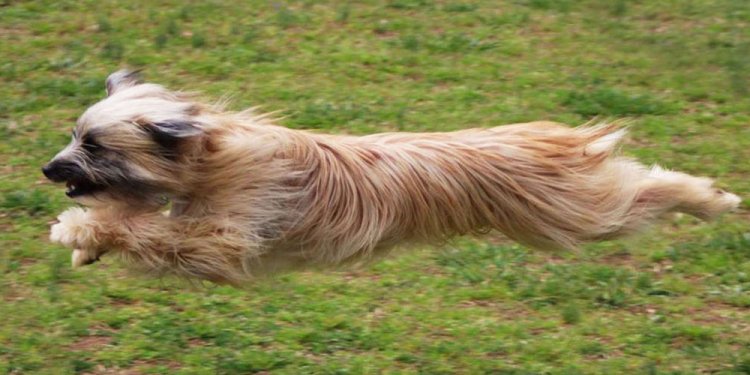
Shepherd Terrier mix puppies
 On a website called yourpurebredpuppy, you might be surprised to see an article about mixed breed dogs.
On a website called yourpurebredpuppy, you might be surprised to see an article about mixed breed dogs.
But many people decide to get a purebred dog without considering whether a crossbreed or mixed breed might be better for them. I want to tell you the pros and cons of all three kinds of dogs. Then you can make an informed choice of which one is really best for you.
Hence my three articles:
and the article you're reading right now:
"Can you look at a mixed breed dog and tell me which breeds he's a mix of?"
Unfortunately the answer is "No."
A mixed breed dog has inherited a jumble of genes and characteristics from his parents. Simply by looking at him, there's no way to tell which of those genes and characteristics have come from which breeds. There could be half a dozen breeds in his ancestry.
Let's consider a dog named Spot.
- If both of Spot's parents are purebred and the same breed, Spot is a purebred dog. Dalmatian + Dalmatian = Dalmatian.
- If both of Spot's parents are purebred but different breeds, Spot is a crossbred dog. Dalmatian + Boxer = Dalmatian/Boxer cross.
- If one of Spot's parents is purebred and the other is crossbred. now it starts to get tricky. Dalmatian + Dalmatian/Boxer is still considered a crossbred dog because there are only two breeds there. Even Dalmatian/Boxer + Dalmatian/Boxer is considered a crossbred dog since there are just two breeds contributing all of Spot's genes.
- But once you introduce a third or fourth breed, such as Dalmatian + Boxer/Poodle. or Dalmatian/Collie + Boxer/Poodle. well, now Spot is a mixed breed dog. Multiple breeds are contributing genes and traits, and there is no way to sort out which genes (and traits) might have come from which breed. And often there are far more than three or four breeds.
People who look at a mixed breed dog and then declare which breed's genes are inside that dog, are only guessing. There are simply too many possible breeds and gene combinations.
 Mixed breed dogs are sometimes called mutts or mongrels.
Mixed breed dogs are sometimes called mutts or mongrels.
There is one way to know which breeds make up your mixed breed dog. You can have his DNA tested.
There's a veterinary company called Wisdom Panel Insights that will do this for you. They'll send you a kit with cotton swabs, which you swirl inside your dog's cheek. His saliva contains his DNA. Mail the swabs back, and the company will tell you which breeds are "in" your mixed breed dog.
I think it's a lot of fun to find this out. For example, you might believe that your mixed breed is "mostly Lab" or "half Shepherd" or "a poodle/terrier mix." Now you can find out whether you were right or wrong!
Does it help to know which breeds are "in" a mixed breed dog?
Let's say you've just gotten a mixed breed puppy. Will finding out his breed composition mean you can predict what he will grow up to look like or act like? Will it help you raise or train your dog?
No, not really. Because even if you know which breeds are in him, you don't know whether those individual DOGS were typical for their breed. There are many purebred dogs who don't look or act like their breed is supposed to.
For example, many Rottweilers love strangers. Many Pit Bulls love other dogs. Some Golden Retrievers are shy or aggressive instead of friendly. Some Chihuahuas weigh 15 pounds instead of 6 pounds. When these dogs produce puppies, their atypical genes and traits can be passed on – to your puppy.
So just because your mixed breed puppy "has pure breeds" in his ancestry doesn't tell you what those individual dogs were like. Therefore you don't know which genes and traits they had available to pass on.
Finally, since your puppy's ancestors include several different breeds, many of their genes will be conflicting. Suppose one of his breeds has genes for friendliness. Another has genes for standoffishness. Another has genes for aggression. When your puppy inherits a jumble of conflicting genes, you don't know which genes will "trump" the others, or which ones will blend together to form some intermediate result.
To paraphrase Forrest Gump, "A mixed breed puppy is like a box of chocolates. You never know what you're gonna get."
The extremes of temperament and behavior often seen in purebreds are less common in mixed breeds. Many purebreds were specifically bred to be very energetic, or very independent, or to have strong chasing or barking or digging instincts. These traits helped the breed perform his work (herding, hunting, guarding, and so on).
Whereas in mixed breeds, extreme temperaments and behaviors are by happenstance rather than deliberate design.
In general, their temperament and behavior tends to be more middle-of-the-road. So mixed breed dogs are often more flexible and may adjust to a greater variety of households and lifestyles.
Potential negative: A mixed breed is not the best choice if you want a dog with specific skills, such as herding sheep, or hunting pheasants or rabbits. These are areas where purebreds (and some specific crossbreeds) are at their very best.
Most mixed breed dogs have good genetic diversity. Their parents were (usually) not related so their genes include a little of this and a little of that. Biologists tell us this is good for health. Some serious health problems are caused by pairing up the same genes.
Mother Nature tends to make dogs moderately sized (about 30 to 60 pounds) with natural builds. Mixed breeds are seldom 3 pounds or 150 pounds. They seldom have smooshed-in faces like Pugs. Or bodies as long as a Dachshund or as barrel-shaped as a Bulldog. Unnatural sizes and physical features are connected with serious health problems in dogs.







